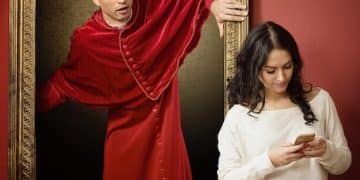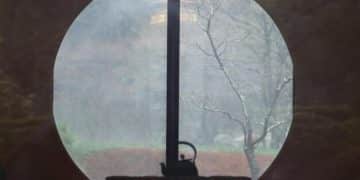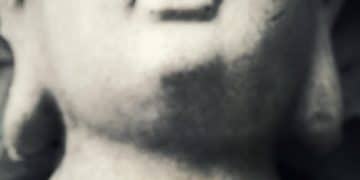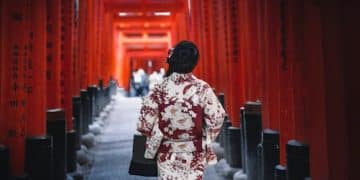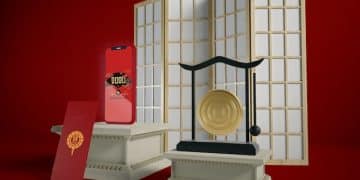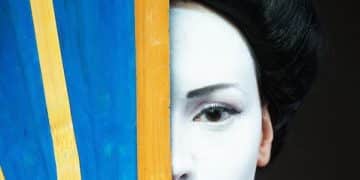Chinese Drama Historical Accuracy: Fact vs. Fiction in Period Dramas

Advertisements
Chinese drama historical accuracy varies greatly depending on the production, with some shows meticulously recreating historical periods while others prioritize entertainment over factual correctness, often blending folklore, legends, and creative license.
Chinese historical dramas captivate audiences worldwide with their elaborate costumes, intricate plots, and compelling characters. But how much of what we see on screen is actually true to history? Let’s delve into the fascinating world of Chinese drama historical accuracy and separate fact from fiction in these period dramas.
Anúncios
Exploring the Allure of Chinese Historical Dramas
Chinese historical dramas have gained immense popularity, not only in Asia but also globally. They offer a glimpse into different dynasties, showcasing the rich culture, traditions, and political intrigues of ancient China. The lavish sets, stunning costumes, and compelling storylines draw viewers in, creating an immersive experience. However, it’s essential to understand the line between historical reality and dramatized storytelling.
The Appeal of Escapism and Entertainment
One of the primary reasons for the popularity of these dramas is their ability to transport viewers to another time. They offer an escape from modern life, allowing audiences to immerse themselves in a world of emperors, concubines, warriors, and scholars. The entertainment value is also a significant factor, with dramas often exaggerating events and characters to create more compelling narratives.
Anúncios
Several factors contribute to the entertainment value of Chinese historical dramas. These include elements of romance, political maneuvering, and heroic feats. While these elements enhance the viewing experience, they often diverge from actual historical events.
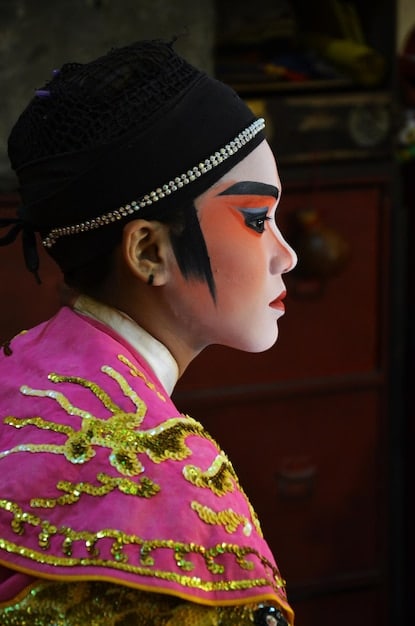
Understanding the Dramatization
Historical dramas are, at their core, works of fiction. While they may be based on actual events or figures, they often take liberties with the historical record to create a more engaging story. This can include embellishing character traits, altering timelines, and adding fictional subplots.
- Creative License: Dramas often prioritize storytelling over strict adherence to historical facts, using creative license to fill in gaps and create dramatic tension.
- Character Exaggeration: Characters may be portrayed as more heroic or villainous than they were in reality to heighten the drama.
- Simplified Complexities: Complex historical events are often simplified to make them more accessible to a wider audience.
It is important to watch these dramas with a critical eye, recognizing that they are not documentaries but rather interpretations of history through a creative lens.
In conclusion, Chinese historical dramas are compelling pieces of entertainment that offer a glimpse into the past. However, viewers should be aware that they are often dramatized and may not accurately reflect historical events.
Dissecting the Historical Accuracy of Costumes and Props
One of the most visually striking aspects of Chinese historical dramas is the elaborate costumes and props. These elements play a crucial role in creating the atmosphere and transporting viewers to a specific time period. However, the accuracy of these details can vary widely depending on the production.
Costume Design: Accuracy vs. Aesthetics
Costume design is a critical element in historical dramas, helping to establish the setting and reflect the status and personality of the characters. While some dramas strive for historical accuracy in their costume design, others prioritize aesthetics and visual appeal.
- Dynastic Representation: Costumes should accurately reflect the fashion and styles of the specific dynasty being portrayed. The use of colors, fabrics, and patterns should align with historical records.
- Rank and Status: Costumes often indicate the rank and status of characters within the imperial court or society. Details such as the type of silk used, the embroidery, and the accessories can provide clues about a character’s position.
- Influence of Modern Fashion: Some dramas incorporate elements of modern fashion and design into their costumes, which can detract from historical accuracy but may enhance the visual appeal for contemporary audiences.
Overall, the balance between historical accuracy and aesthetic appeal in costume design can vary significantly between different Chinese historical dramas.
The Role of Props and Set Design
Props and set design are equally important in creating a believable historical environment. From furniture and artwork to weapons and everyday objects, these details contribute to the overall authenticity of the drama.
Like costumes, props and set designs can be historically accurate or embellished for visual impact.
Some key aspects of props and set design include:
- Authenticity: Props should be accurate representations of objects used during the specific time period, based on archaeological findings and historical records.
- Attention to Detail: Paying attention to details such as the materials used, the craftsmanship, and the wear and tear of props can enhance the authenticity of the drama.
- Symbolism: Props often carry symbolic meanings that reflect the cultural values and beliefs of the time period. Understanding these symbols can add depth to the viewing experience.
Proper use of props and set designs can significantly enhance the viewing experience and immerse viewers in the historical setting of the Chinese historical drama.
In summary, while costumes and props in Chinese historical dramas can be visually stunning, it is important to assess their historical accuracy. Productions that prioritize research and attention to detail tend to offer a more authentic representation of the past.
Significant Rulers and Figures: Myth vs. Reality
Chinese historical dramas often revolve around significant rulers and figures, portraying their lives, achievements, and struggles. These portrayals can be both captivating and informative, but it’s essential to distinguish between historical fact and dramatized fiction.
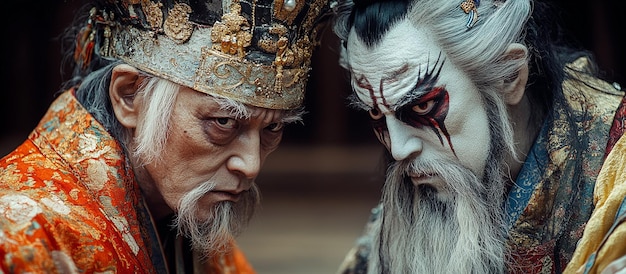
Emperors and Empresses: Fact or Exaggeration?
Emperors and empresses are central figures in many Chinese historical dramas. Their stories are often filled with political intrigue, romantic entanglements, and epic battles. However, the dramatized versions of these rulers may deviate significantly from their historical counterparts.
Below are some aspects to consider when evaluating the authenticity of rulers and empresses portrayed in chinese historical dramas.
Key factors that are changed on Chinese Historical Dramas:
- Character Traits: Dramas often exaggerate certain character traits of emperors and empresses to create more compelling narratives. For instance, a benevolent ruler may be portrayed as excessively kind, while a tyrannical ruler may be depicted as purely evil.
- Relationships: Romantic relationships and family dynamics are frequently embellished or fictionalized in historical dramas to add emotional depth and dramatic tension.
- Achievements and Failures: Historical dramas may selectively highlight certain achievements or failures of rulers, while downplaying others to fit the overall narrative.
Military Leaders and Strategists: Heroes or Villains?
Military leaders and strategists also play significant roles in Chinese historical dramas, often depicted as either heroic figures or cunning villains. These portrayals can be influenced by cultural values, political agendas, and storytelling conventions.
Military and strategists in Chinese Historical Dramas, may have:
- Exaggerated Skills: Military leaders may be depicted as possessing superhuman skills or strategic genius that exceeds their actual abilities.
- Moral Ambiguity: Dramas often explore the moral complexities of military leaders, portraying them as individuals who must make difficult choices in the face of war and conflict.
- Romantic Interests: Romantic subplots involving military leaders are common in historical dramas, adding emotional depth and appeal to the characters.
In conclusion, Chinese historical dramas offer a glimpse into the lives of significant rulers and figures from the past. However, viewers should be aware that these portrayals are often dramatized and may not accurately reflect historical realities.
Political Intrigue and Court Life: Truth Behind the Drama
Political intrigue and court life are recurring themes in Chinese historical dramas, adding layers of complexity and suspense to the narratives. These dramas often depict power struggles, conspiracies, and betrayals within the imperial court, providing a glimpse into the complex dynamics of ancient Chinese politics.
Power Struggles and Succession Battles
Power struggles within the imperial court are a staple of Chinese historical dramas. These dramas often depict intense competition for the throne, with princes, concubines, and officials vying for influence and control.
Power struggles in Chinese Historical Dramas may show:
- Scheming and Manipulation: Characters engage in elaborate schemes and manipulations to undermine their rivals and gain favor with the emperor.
- Alliances and Betrayals: Alliances are formed and broken as characters navigate the treacherous landscape of court politics. Betrayal is a common theme, as individuals prioritize their own ambitions over loyalty.
- Violence and Intrigue: Power struggles often escalate into violence and intrigue, with assassinations, poisonings, and other forms of subterfuge used to eliminate opponents.
Concubines and Harems: Reality vs. Romanticization
The lives of concubines and harems are another common focus of Chinese historical dramas. These dramas often depict the complex relationships, rivalries, and aspirations of women within the imperial court.
- Competition for Favor: Concubines compete for the emperor’s attention and affection, vying for higher status and influence within the harem.
- Limited Freedom: The lives of concubines are often restricted by rules and regulations, with limited freedom and autonomy. They may be subject to the whims of the emperor and the intrigues of other court members.
- Desire for Power: Despite their limited freedom, concubines often seek to exert power and influence through their relationships with the emperor and their alliances with other court members.
Chinese historical dramas offer a fascinating glimpse into the world of political intrigue and court life in ancient China, and viewers should be aware that these portrayals are often dramatized and may not accurately reflect historical realities.
In conclusion, the lives of concubines are often romanticized and simplified in Chinese historical dramas, viewers should be aware that these portrayals are often dramatized and may not accurately reflect historical realities.
Cultural Traditions and Social Customs: Authenticity on Screen
Chinese historical dramas offer a window into the cultural traditions and social customs of ancient China. These dramas often depict rituals, ceremonies, festivals, and everyday practices, providing viewers with insights into the values, beliefs, and social structures of the time.
Rituals and Ceremonies: Symbolism and Significance
Rituals and ceremonies play a central role in Chinese historical dramas, reflecting the importance of tradition, order, and hierarchy in ancient Chinese society. These dramas often depict elaborate ceremonies such as imperial coronations, ancestral veneration, and diplomatic exchanges.
Rituals and Cerimonies often show:
- Symbolic Gestures: Rituals and ceremonies are filled with symbolic gestures and actions that convey specific meanings and intentions. Understanding these symbols can add depth to the viewing experience.
- Hierarchical Order: Ceremonies often reinforce the hierarchical order of society, with emperors, officials, and commoners each playing specific roles and adhering to strict protocols.
- Religious Beliefs: Many rituals and ceremonies are rooted in religious beliefs and traditions, reflecting the spiritual values of ancient Chinese society.
Festivals and Celebrations: Reflecting Societal Values
Festivals and celebrations provide opportunities for communities to come together, celebrate their cultural heritage, and reinforce shared values. Chinese historical dramas often depict festivals such as Chinese New Year, the Mid-Autumn Festival, and the Dragon Boat Festival.
Festivals and celebrations portrayed on Chinese Historical Dramas:
- Family Reunions: Festivals are often occasions for family reunions, with family members traveling long distances to be together and honor their ancestors.
- Traditional Foods: Traditional foods are an integral part of festivals, with specific dishes associated with different celebrations. These foods often carry symbolic meanings and are shared among family and friends.
- Cultural Performances: Festivals often feature cultural performances such as dragon dances, lion dances, and musical performances, showcasing the artistic talents and cultural richness of the community.
In conclusion, cultural traditions and social customs are vividly portrayed in Chinese historical dramas, viewers should be aware that these portrayals are often dramatized and may not accurately reflect historical realities.
Impact on Modern Audiences: Perceptions and Misconceptions
Chinese historical dramas have a significant impact on modern audiences, shaping perceptions of ancient China and influencing understandings of history, culture, and society. While these dramas can be entertaining and informative, they can also contribute to misconceptions and stereotypes.
Shaping Perceptions of Ancient China
Chinese historical dramas introduce modern audiences to the history, culture, and society of ancient China. They offer glimpses into different dynasties, showcasing the lives of emperors, officials, warriors, and commoners.
Chinese Historical Dramas may show:
- Visual Representations: Dramas provide visual representations of ancient Chinese clothing, architecture, and customs, helping viewers to imagine and understand the past.
- Narrative Storytelling: Dramas tell stories about historical events and figures, bringing the past to life in a way that textbooks and documentaries cannot.
- Emotional Connection: Dramas create emotional connections between viewers and the characters and events they depict, making the past feel more relatable and relevant.
Addressing Common Misconceptions
Chinese historical dramas can also contribute to misconceptions about ancient China, particularly if viewers do not critically assess the information presented on screen. Common misconceptions include:
Common Misconceptions:
- Oversimplification of History: Dramas often oversimplify complex historical events and figures, reducing them to simplistic narratives of good versus evil or success versus failure.
- Stereotypical Characters: Dramas may perpetuate stereotypes about different groups of people, such as emperors, concubines, or ethnic minorities.
- Exaggerated Violence: Dramas often exaggerate the level of violence in ancient China, creating a perception of a brutal and lawless society.
In conclusion, Chinese historical dramas have a profound impact on modern audiences, viewers need to be aware to fact check and not take the dramas seriously.
| Key Point | Brief Description |
|---|---|
| 🎭 Dramatization | Historical dramas often exaggerate events for entertainment. |
| 👑 Rulers | Emperors and empresses are often portrayed with amplified character traits. |
| 👗 Costumes | Costume accuracy varies; some prioritize aesthetics over historical detail. |
| ⚔️ Intrigue | Political struggles and court life are common, but often highly dramatized. |
FAQ
▼
Costume accuracy varies. Some dramas meticulously recreate historical attire, while others prioritize aesthetic appeal. Details may be adjusted to enhance visual storytelling.
▼
Portrayals of rulers often exaggerate traits for dramatic effect. Romantic relationships and family dynamics may be fictionalized to add emotional depth.
▼
Significant creative license is often taken. Dramas prioritize storytelling over strict historical accuracy, using fictional subplots and altered timelines.
▼
While dramas offer glimpses into cultural traditions, they often romanticize or simplify them. Rituals and ceremonies are depicted with varying degrees of authenticity.
▼
Dramas shape perceptions but can also perpetuate misconceptions. Critical viewing is essential to separate fact from fiction and avoid oversimplifying history.
Conclusion
In conclusion, while Chinese historical dramas offer an engaging window into the past, it’s vital to approach them with a discerning eye. The blend of fact and fiction serves primarily to entertain, and understanding this balance allows viewers to appreciate the artistry while remaining grounded in historical reality.
